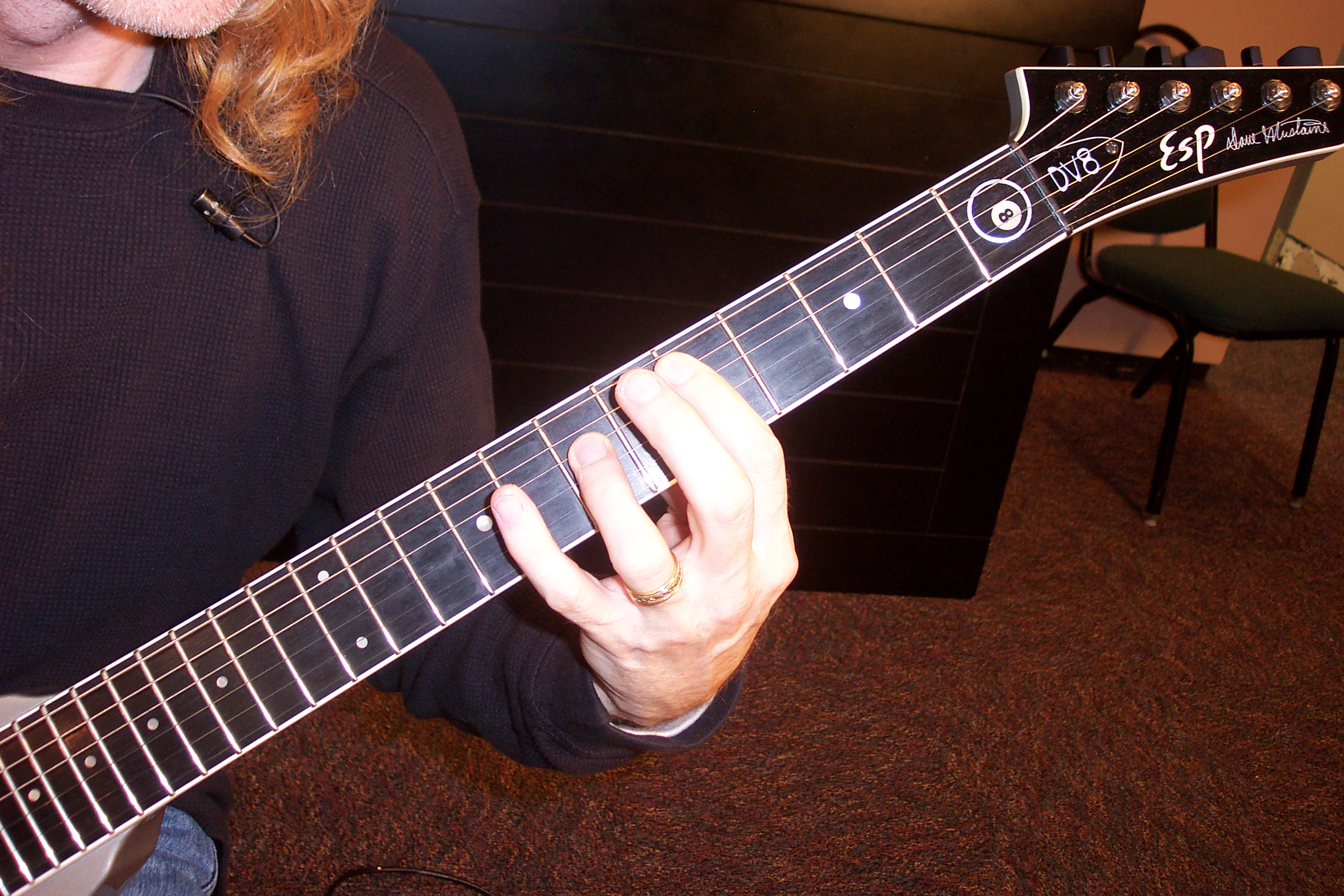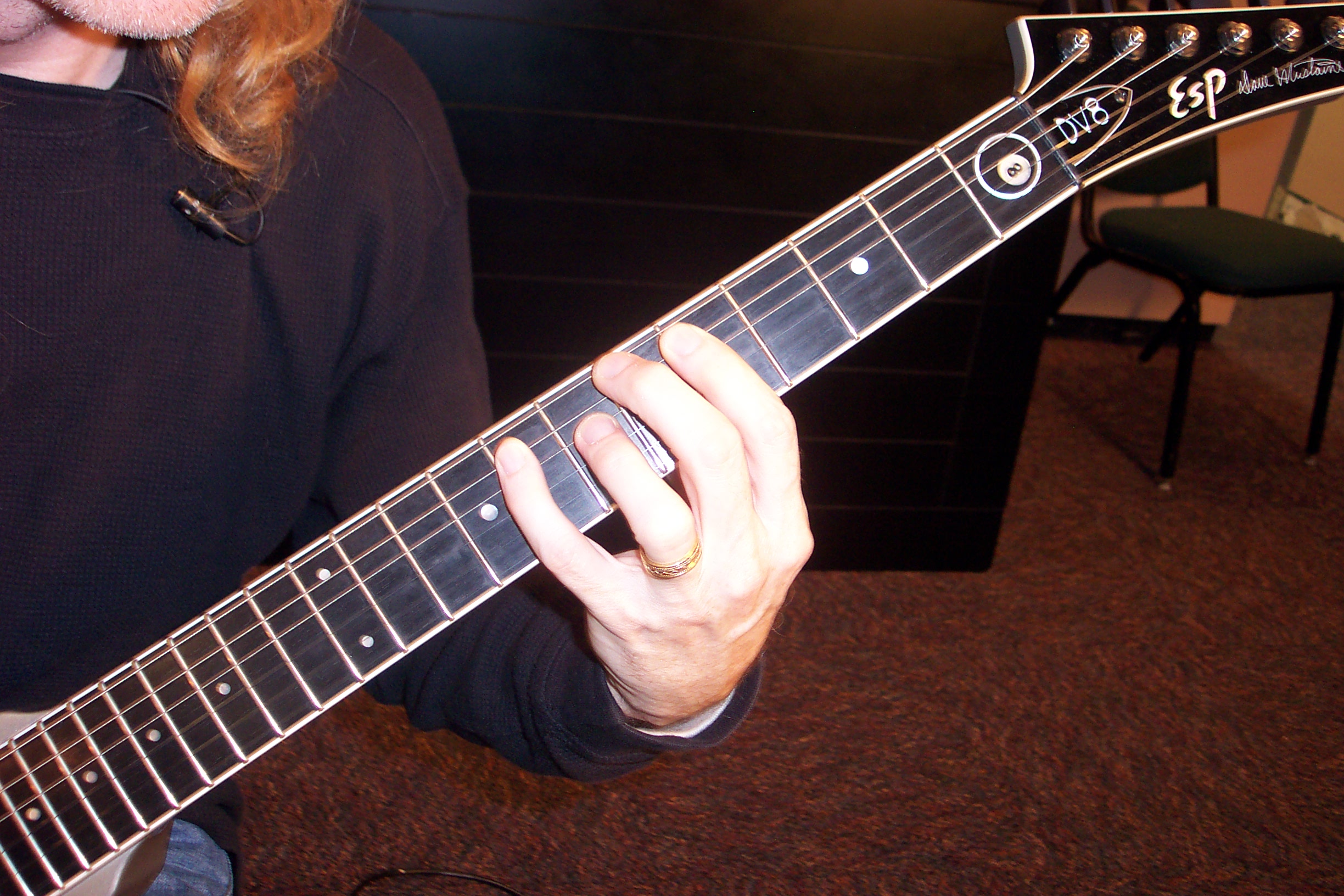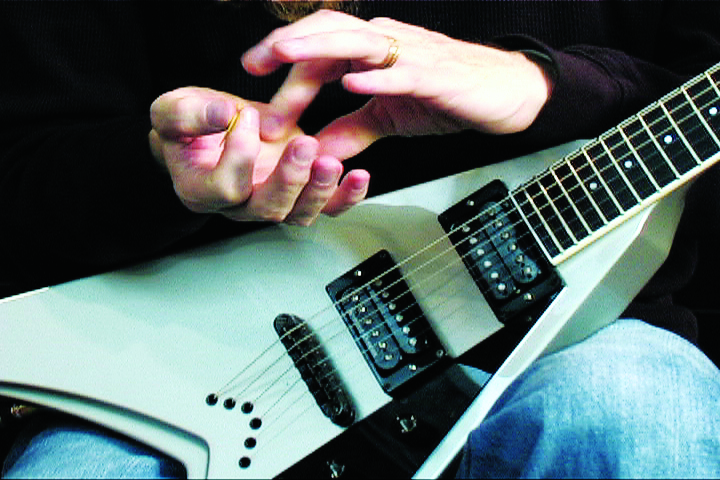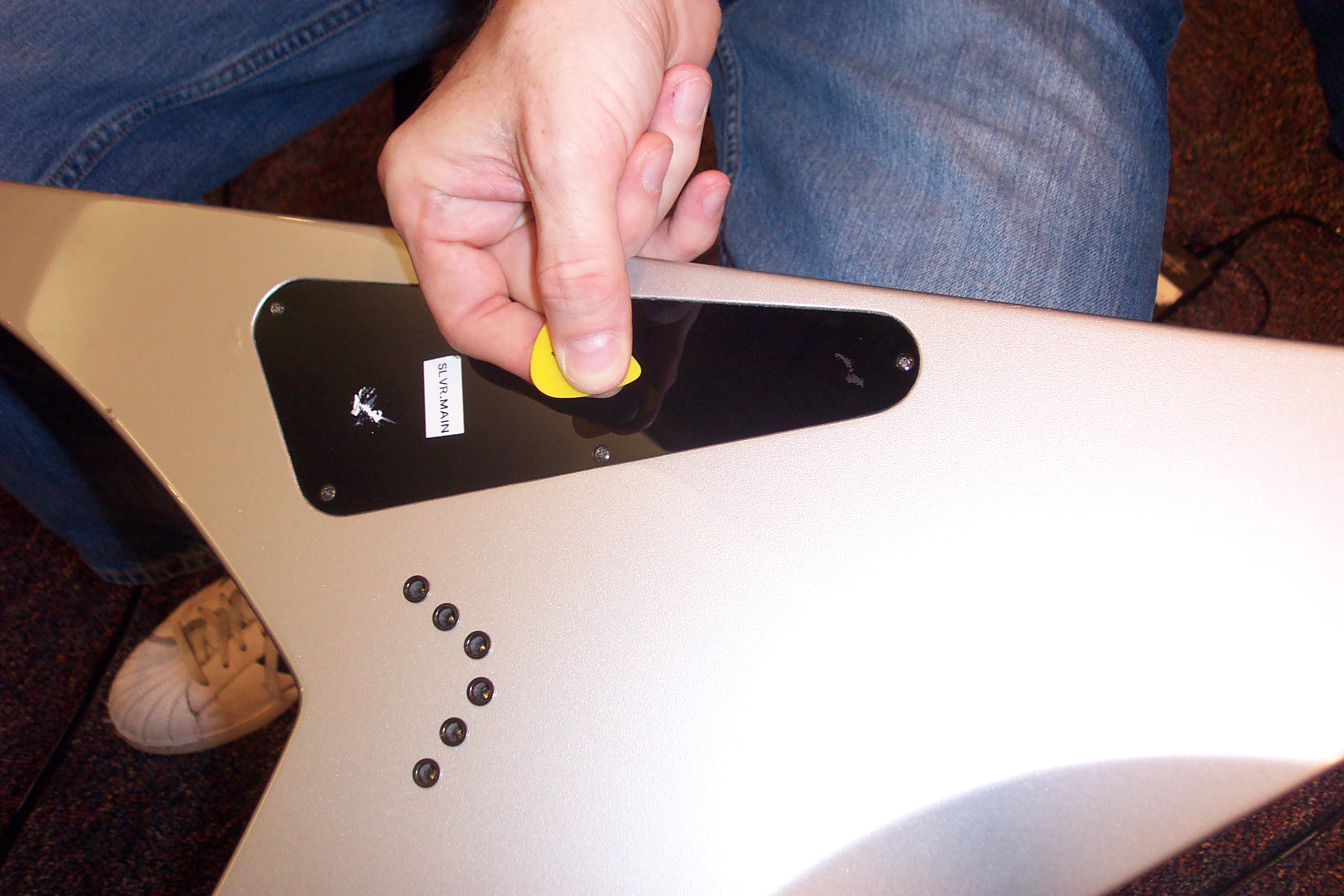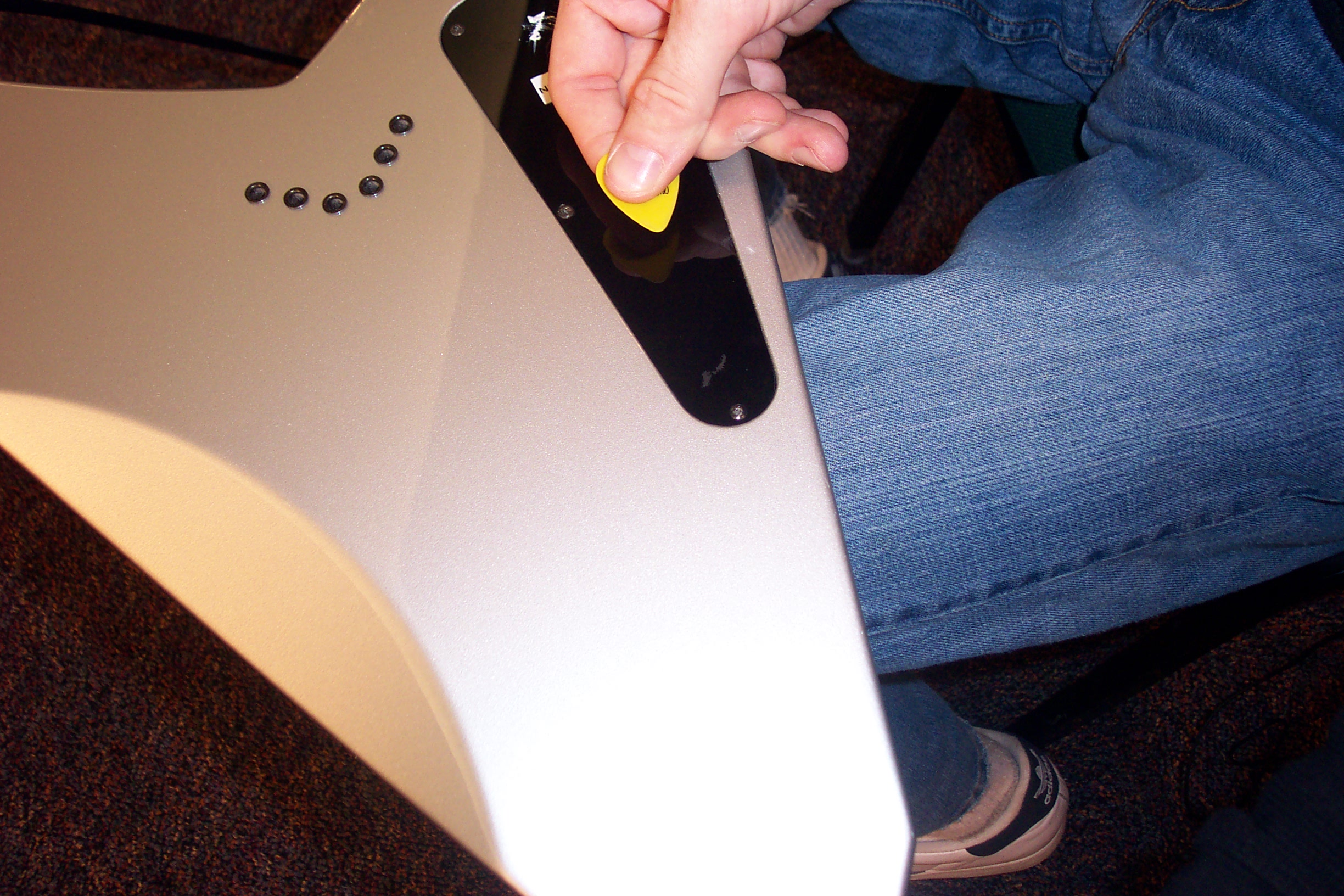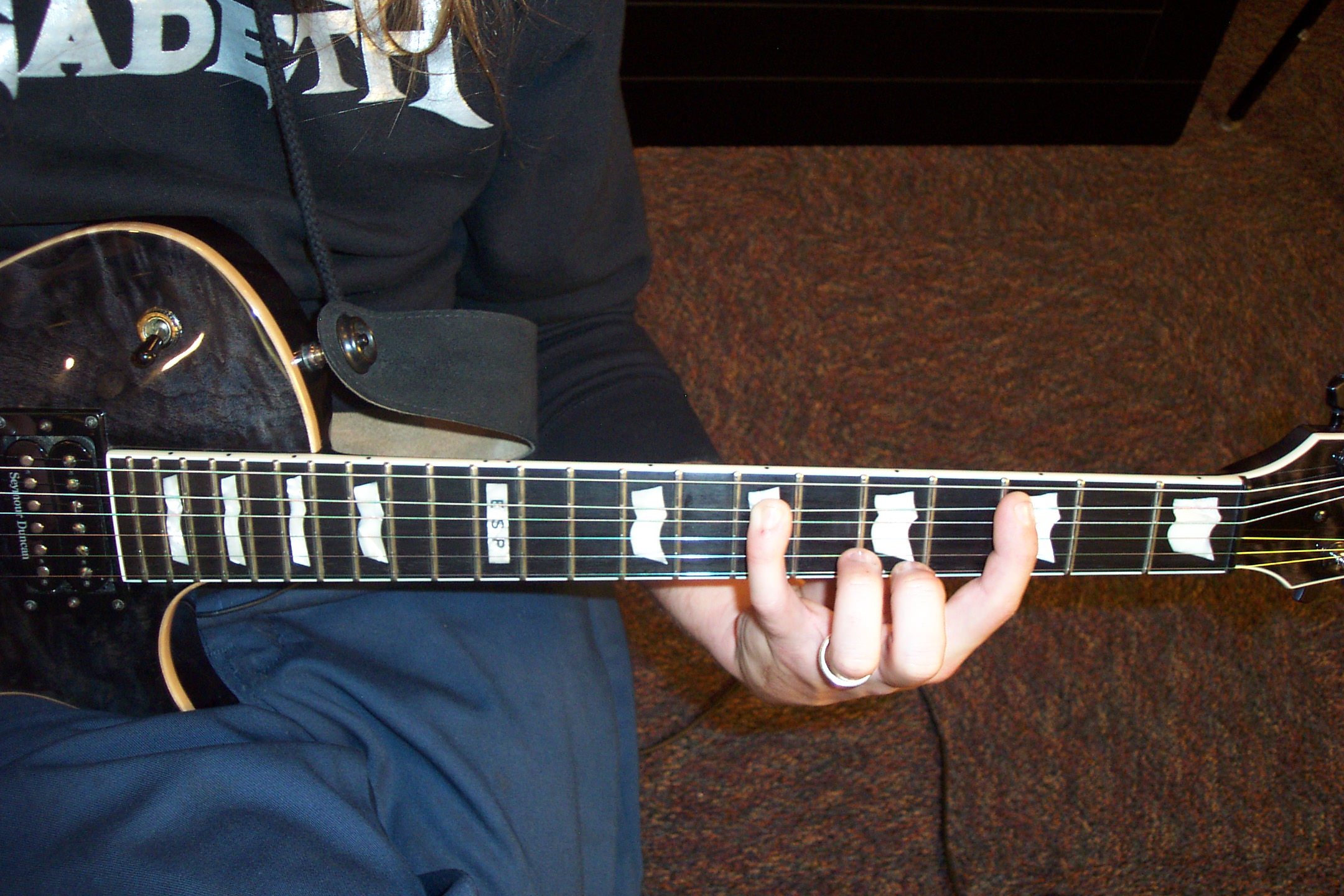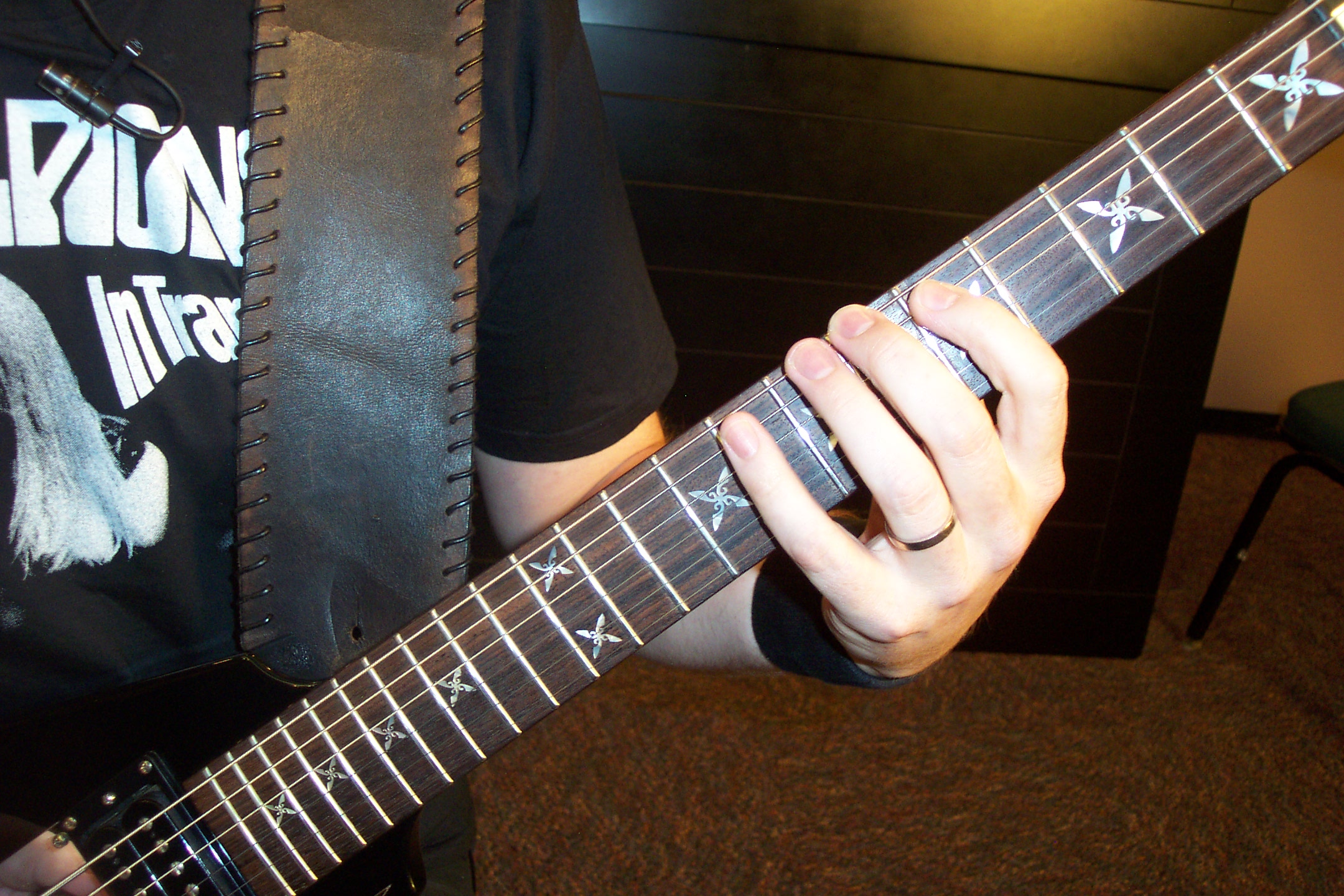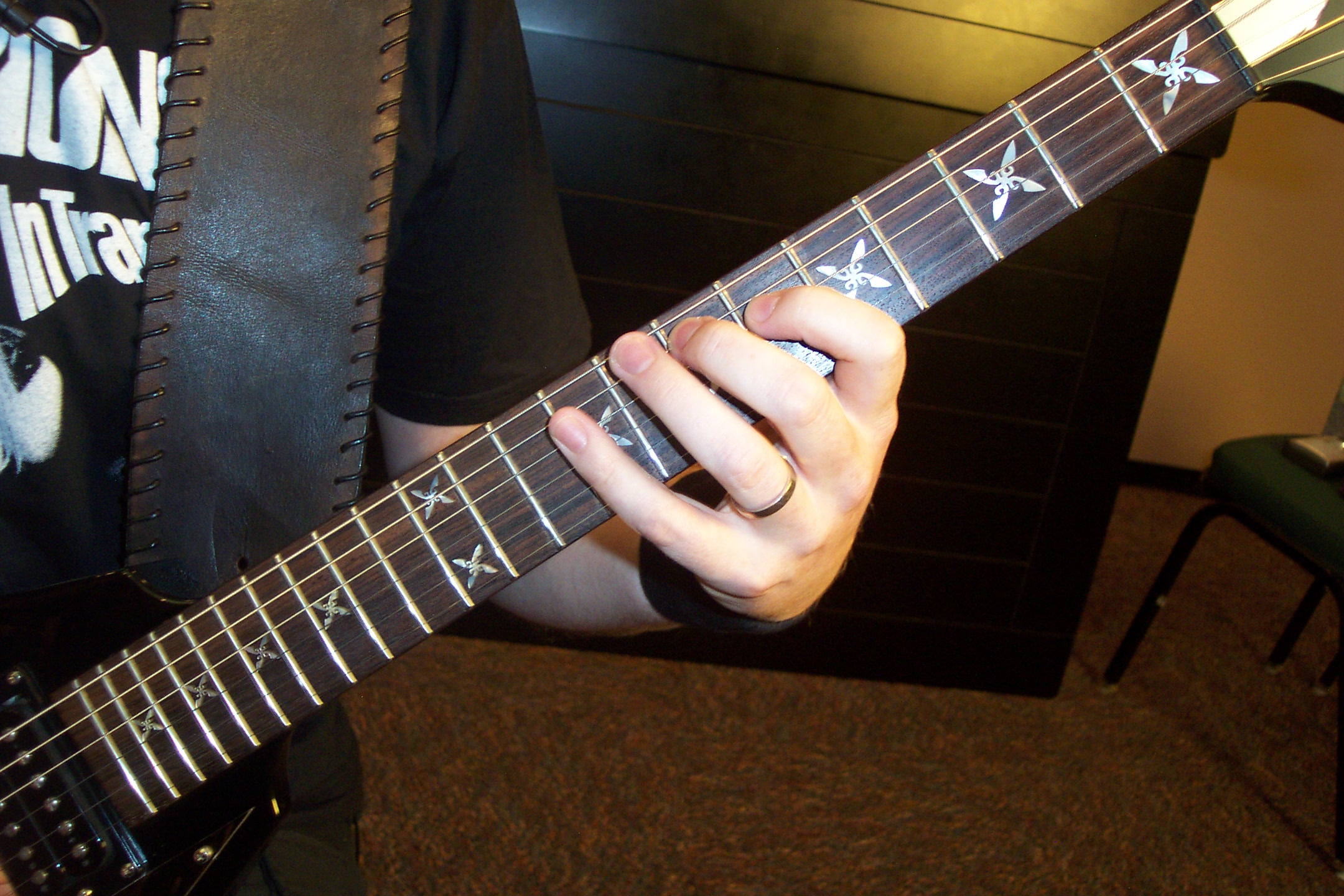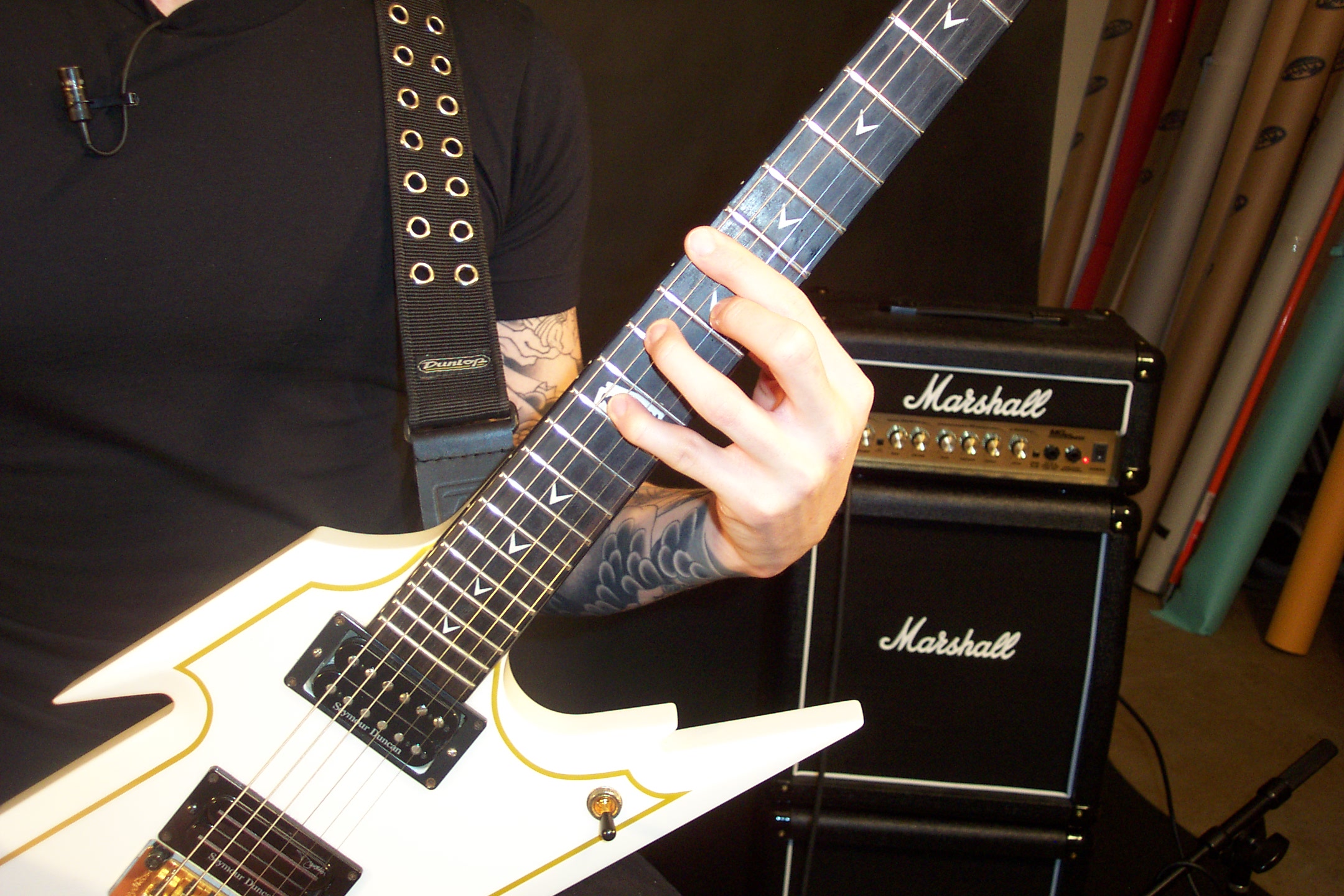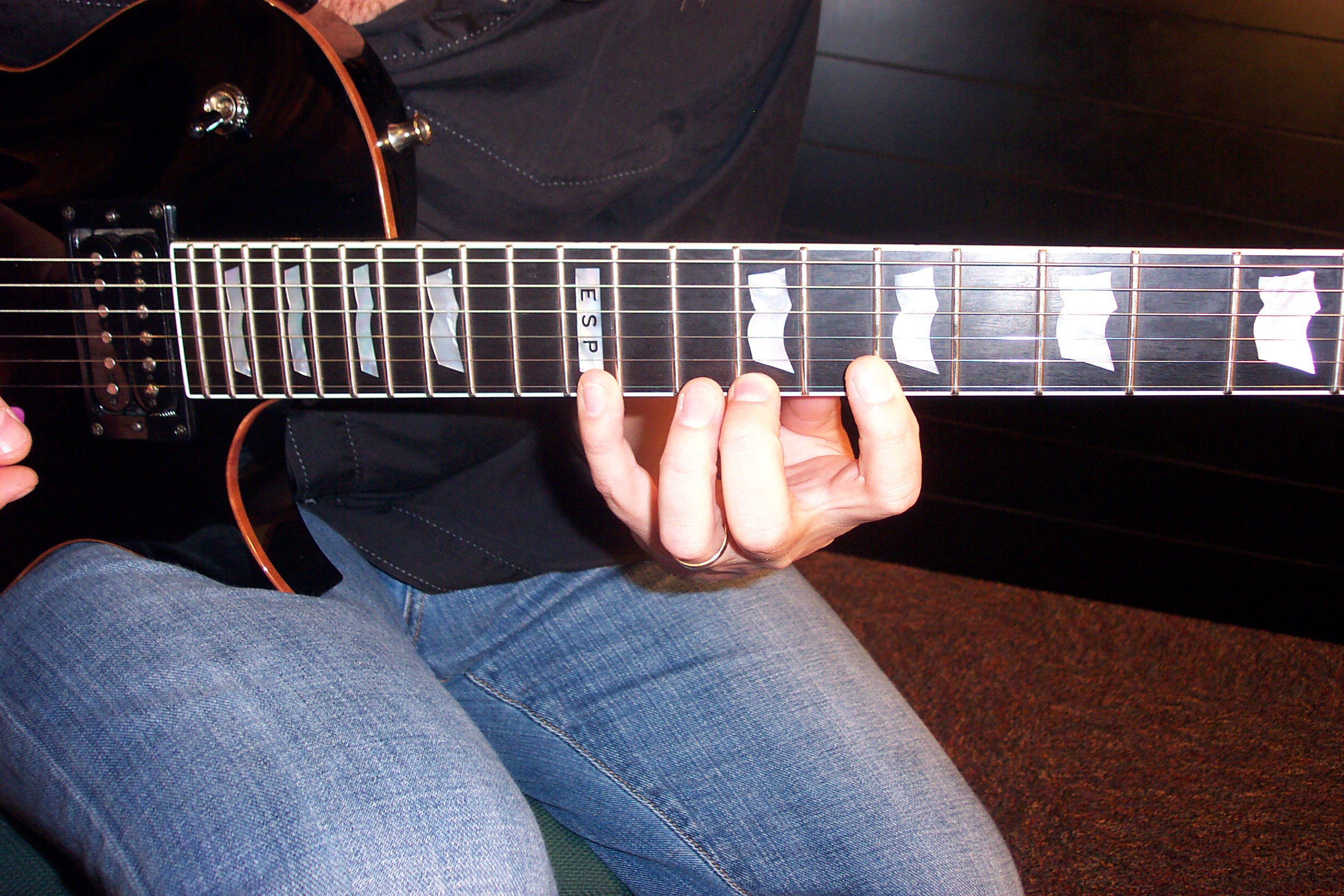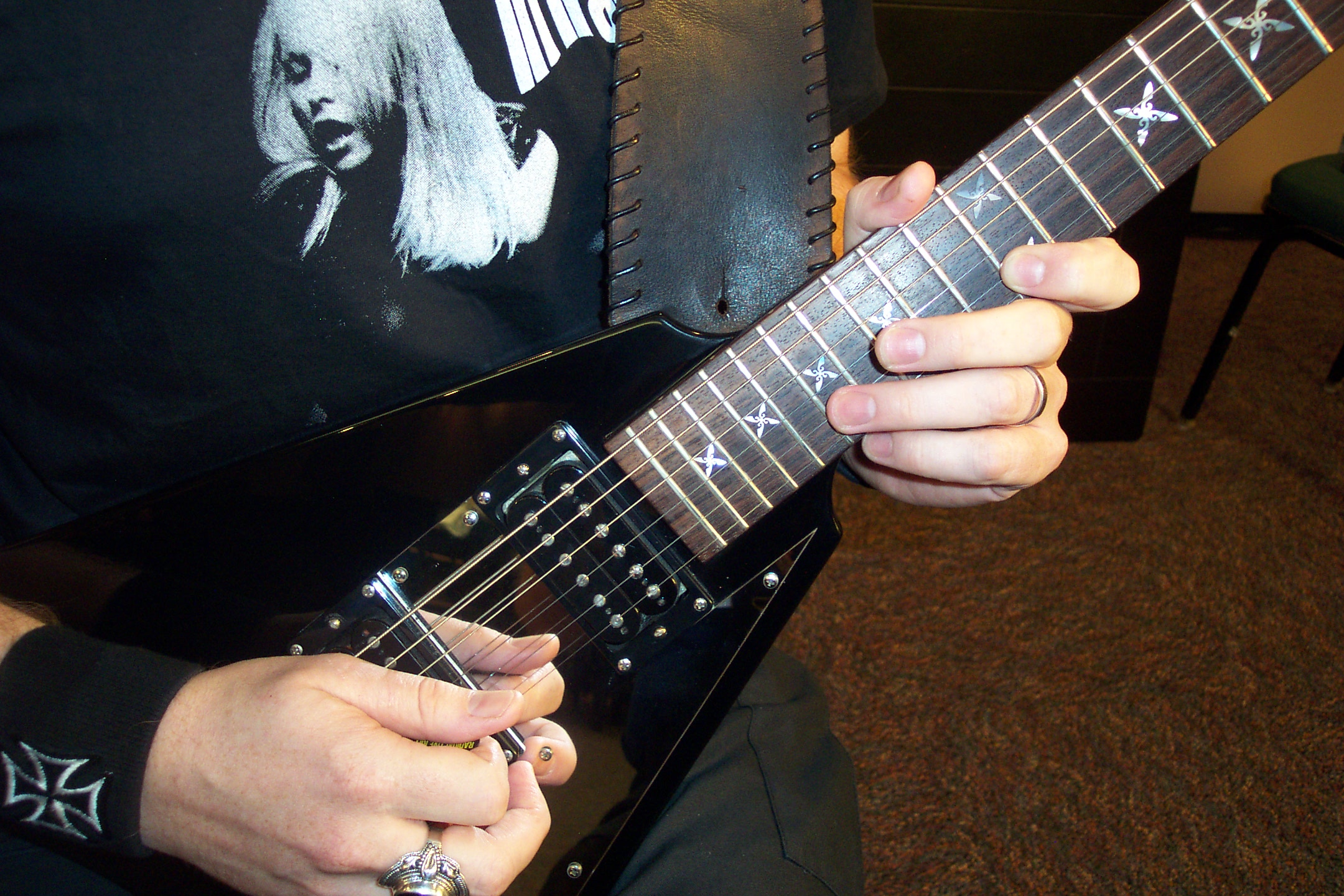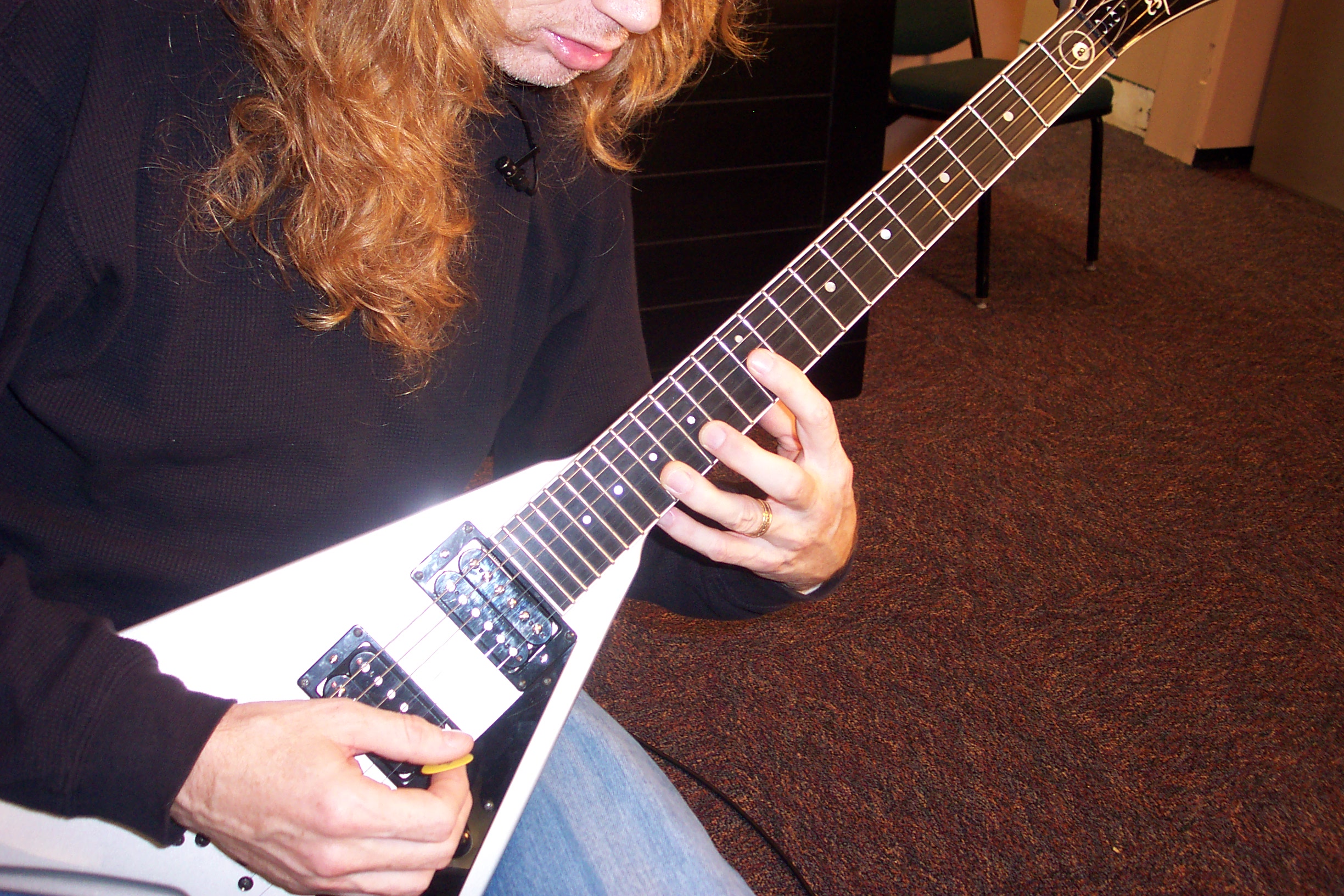The Art of Shredding with Megadeth, Lamb of God, Trivium, Arch Enemy and More
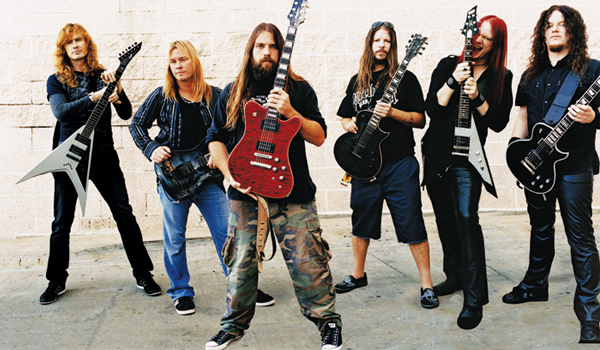
In this Guitar World exclusive, we’ve gathered together Mustaine and his Megadeth coguitarist, Glen Drover, Lamb of God’s Mark Morton and Willie Adler, Arch Enemy’s Michael Amott and Fredrik Akesson, and Trivium’s Matt Heafy and Corey Beaulieu to teach you the essential skills of modern shred.
Using their own examples, we’ll show you everything from rhythm and lead playing to speed picking and sweep arpeggios. So grab your guitar and get ready for the ultimate lesson in shredding—21st century style.
[Note: Due to an unforeseen issue, there are gaps in the figure numbers in the following lesson. Rest assured, however, no content is missing!]
CHAPTER 1 “Sport Metal”: Modern Rhythm Methods
All the guitarists involved in this lesson have one thing in common: they are passionate and dedicated players who write great riffs, many of which are quite challenging to play. In fact, Arch Enemy’s Michael Amott described this type of playing as “sport metal.”
“Michael’s right: it is sport metal,” says Willie Adler. “There’s a real finesse to a lot of the riffs, and they’re physically challenging every time you play them. With the new songs we’re playing from Sacrament, I’ve got to warm up for at least an hour before we go onstage.”
We asked Adler’s co-axman, the always eloquent Mark Morton, to explain some of the rhythm playing differences between metal’s “old-school” and “nu-school.” Despite a brutal hangover, Morton not only stepped up to the plate but also came up with “the hangover riff” to illustrate his point.
All the latest guitar news, interviews, lessons, reviews, deals and more, direct to your inbox!
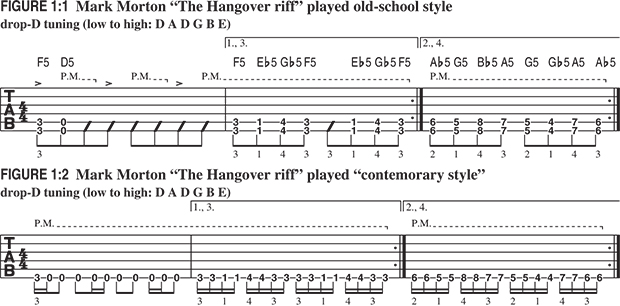
“Here’s an example of what I would consider more of a late-Eighties, Bay Area–thrash take on the riff. And here’s a more contemporary style of doing the same riff,” Morton says as he performs FIGURE 1:1 then FIGURE 1:2. “As you can see, they’re the same pattern, the same note choices, but with a different and faster right-hand cadence, giving it a more modern, ‘deathy’ feel.”
As you can see and hear, the “right hand cadences” Morton is referring to involve “gallop” and “reverse gallop” picking patterns plus double picking a lot of the notes.
We asked all our guest teachers to name a few albums that they consider vital references to great metal rhythm work. In addition to Metallica’s seminal Master of Puppets and Pantera’s Vulgar Display of Power, Megadeth’s classic Rust in Peace topped the tally. Says Amott, “That album definitely set the bar pretty high for music like this. It’s full of ‘Hall of Fame’ riffs.”
Glen Drover, Megadeth’s lead guitarist, has a pretty challenging role—not only does he have to perform leads by his virtuoso predecessors Chris Poland and Marty Friedman; he also has to double Mustaine’s vast repertoire of “Hall of Fame” riffs. “Some of the rhythm patterns are equally demanding to play as the solos,” says Drover. “Take a song like ‘Holy Wars’—it’s incredibly busy, and there’s so much stuff in there that you’ve really got to be on top of your game.”
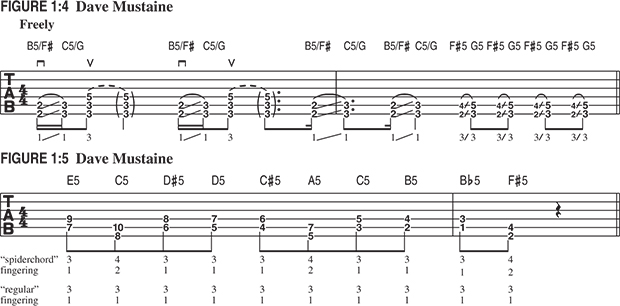
In addition to his ultraprecise picking and knack for writing riffs, Mustaine is the master of rhythmic nuance. “One thing I’ll often do with my rhythm playing is slide into a chord,” says Mustaine as he plays FIGURE 1:4. “That makes the chords really growl, like in ‘Ashes in My Mouth.” Another must-know Mustaine technique is his “spider finger” chord-grabbing technique, which he demonstrates in FIGURE 1:5 and PHOTOS A and B. “Alternating pairs of fingers like this is definitely easier than having to move your entire hand back and forth [see the “regular” fingering under the tablature]. If you have to move your hand, your timing is gonna be off and there will be string noise. Plus, you’ll be relying too much on guesswork.”
Like all metal masters, Mustaine uses palm muting (p.m.) to great effect. Palm muting is the technique of rolling the fleshy part of your palm [PHOTO C] forward from the bridge to dampen the strings. But as Mustaine points out, there is another way to stop notes from ringing, and you can do it with your pick. “So many people think picking is just about moving the pick up and down,” he says. “But you’ve also got to think about how to kill the string’s vibration to give the line articulation. On a riff like the one from ‘Hanger 18,’ I’m not really palm-muting the D string with my right hand; I do it all with pick articulation.”
Mustaine explains that this involves playing in a strict staccato fashion. “The note dies when the pick touches the string again,” he says. Furthermore, it requires using less of the guitar pick’s point. “When I’m really pedaling, the amount of pick sticking out from my fingers is minute [PHOTO D],” says Mustaine. “But when I’m doing percussive stuff, like ‘Train of Consequences,' I slide my fingers away from the tip of the pick [PHOTO E].”
In conclusion, Mustaine offers this advice: “I think the secret to accurate picking is slowly speeding up. It’s really easy to play rhythm super fast, but with most guitarists, if you slow down their recordings you’ll see that they aren’t very accurate at all. Most of the time they’re terrible. If you want to be fast and accurate, learn your rhythm parts by playing them slow and then gradually bring them up to speed, concentrating the whole time on being accurate. There is no other way.”
CHAPTER II “No Pain, No Gain”: Warming Up

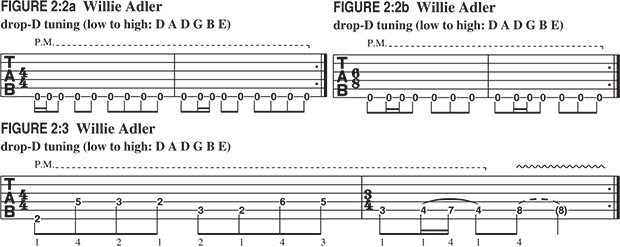
As Lamb of God’s Willie Adler has already stated, warming up for an hour or more is vital for “Sport Metal” participants. “We’ve got some riffs similar to this that are hard as shit,” he says while playing FIGURE 2:1. “So I have to warm up for an hour or more before every show, mainly by playing the riffs in our set that I find the most demanding. I work on my picking speed and stamina by doing simple, quick chugs with triplets [gallops] thrown in [FIGURES 2:2a and b], repeating them over and over and speeding them up as fast as I can. I’ll also do string jumping and wide-stretch riffs [PHOTO F and FIGURE 2:3].”
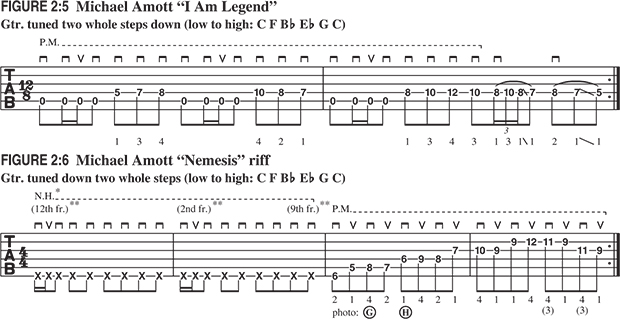
Michael Amott has a similar and equally lengthy pre-gig warm up. Two Arch Enemy riffs he often uses in this ritual are from “I Am Legend” (FIGURE 2:5) and “Nemesis” (FIGURE 2:6).
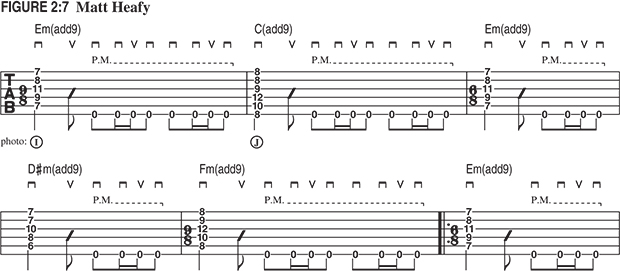

FIGURE 2:7 is a cool, off-kilter offering from Trivium’s Matt Heafy that uses all six strings, “gets all your fingers working and also gets a gallop pick going.”
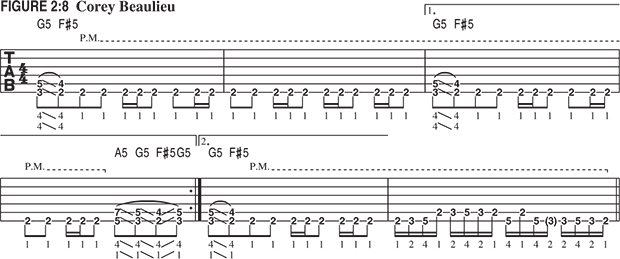
FIGURE 2:8 is from Heafy’s bandmate, Corey Beaulieu, and is a great F# minor example of “getting a picking pattern going and then throwing in a same-key, scale-type run to make it more interesting,” a ploy endorsed by Dragonforce.
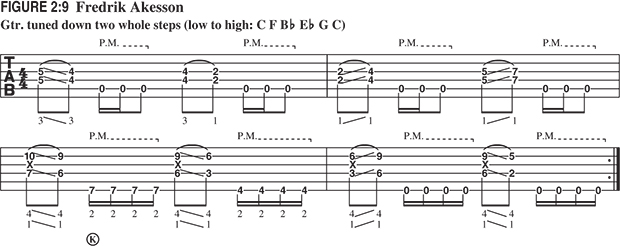
This section closes with a riff offered by Fredrik Akesson of Arch Enemy. “This is a rhythm riff I came up with [FIGURE 2:9]. It’s got gallops in the first part and 16th notes and octaves in the second part. I also use my second finger to fret the bass notes on the bottom string [PHOTO K].”
CHAPTER 3 Lead Workout I: Speed Picking

There’s only one way to master this: “Practice…a lot of fucking practice,” says Megadeth’s Glen Drover. “It takes dedication and a sense that you’re never totally comfortable with your skill level. That’s absolutely a healthy attitude for growth as a guitarist.” Drover then proceeds to show us three simple “start out slowly and build up speed sensibly” alternate (down-up) picking exercises in E minor, FIGURE 3:4 a–c , that enable you to focus on your picking technique and “really get the blood pumping.”

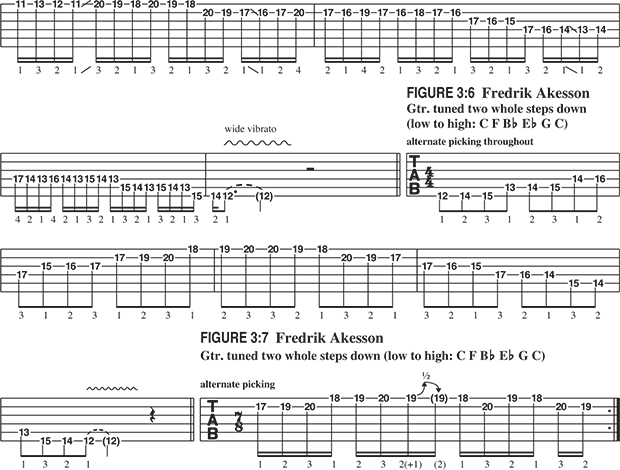
Once you’ve paid your dues practicing these essential chop builders, you’re ready for the big leagues and FIGURE 3:5, a blistering, exotic-sounding E minor based workout from Akesson that involves the “Hungarian scale [FIGURE 3:6] combined with some chromatic stuff and alternate picking all the way.” FIGURE 3:7 is a simpler but equally effective E minor, Hungarian-spiced lick.
CHAPTER 4 Lead Workout II: Sweep Picking Arpeggios
Sweep picking is probably the most famous shred technique out there. Yngwie Malmsteen is its undisputed master and the guy who put it on the metal map. But as he explains, most players don’t know or employ the necessary rules.
“Most guitarists have a general idea of how to approximate the technique, but only a few do it correctly,” he says. “The rest of them let the notes ring too long or try to play too fast and sacrifice precision and clarity. Either way, it sounds like shit.” As he explains, the only way to correct these errors is to separate the right- and left-hand components of sweep picking, master them separately and then coordinate them with one another. Of course, it’s not easy. You’ll have to put in a lot of practice time to get it right.
To get a feel for the right-hand picking technique, says Yngwie, “You have to let the pick ‘fall’ from string to string, as if you were strumming a chord. It’s important that you don’t separate the pick strokes. When executing an upward sweep, drag the pick upward over the strings in one fluid motion. Again, it’s imperative that you don’t use individual upstrokes.”
The fret-hand component is equally important. “You need to mute each string with the fret-hand immediately after picking it by lightly lifting or ‘rolling’ your fretting finger to keep the notes from ‘bleeding’ into one another and sounding like a strummed chord.”
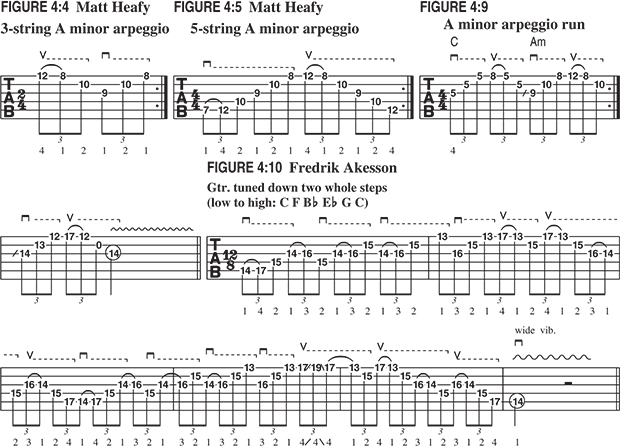
Heeding Yngwie’s words, work on FIGURE 4:4, a three-string A minor arpeggio from Trivium’s Matt Heafy. Once you’ve mastered that, check out the more challenging five-string version he offers in FIGURE 4:5. As Heafy says, “It’s all a matter of starting them off really slow and working your way up.” When you have those under your belt, try FIGURE 4:10, Fredrik Akesson’s slippery Bm7f5 diminished arpeggio (B D F A) that continually goes back on itself and repeats.
CHAPTER 5 Lead Workout III: Legato Leads
“Legato” is a fancy Italian musical term for “smooth.” For shred guitarists, playing legato requires using numerous hammer-on and pull-off combinations to make lines sound as smooth as possible. Once again, there is no magic shortcut. Mastering this way of playing will take practice, and lots of it.
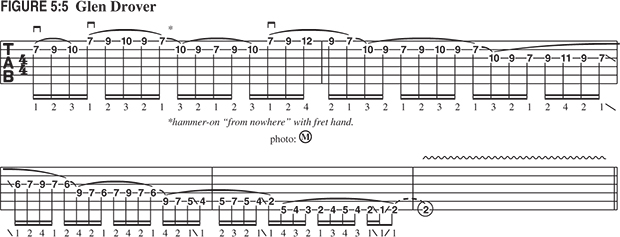
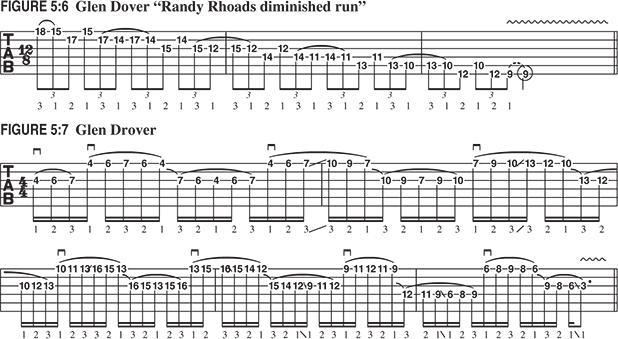
When pulling off, pull the string slightly in toward the palm. This will help keep the string vibrating and prevent the note from dying. When you’re ready, check out the molten-lava example from Glen Drover in the key of F# minor shown in FIGURE 5:5 and the demented, diminished-flavored FIGURE 5:7, a lick inspired by what Glen calls the “Randy Rhoads diminished run” (FIGURE 5:6) And don’t be afraid to break these phrases into “bite-size chunks” and chew them slowly.
CHAPTER 6 Lead Workout IV: Pentatonic Power
With sweep arpeggios, diminished licks and Hungarian scales being tossed about, let’s not forget the almighty minor pentatonic and blues scales. Sure, they’re simple and ubiquitous, but these five- and six-note scales are responsible for more great metal riffs and leads than all other scales combined. Sometimes, the best way to break up all the sweep-picking, legato and speed-picked madness is with a burst of pentatonic purity or ballsy blues.

Check out Michael Amott’s simple but effective E minor blues scale (E G A Bb B D) wide-stretch burst in FIGURE 6:5a. As he correctly points out, it’s merely an extension of the more common E minor pentatonic (E G A B D) cliché shown in the first half of FIGURE 6:5b, but it definitely makes a mark.
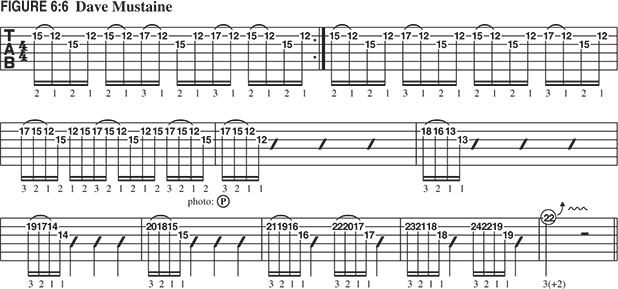
The undeniable impact of pentatonic and blues scales is illustrated perfectly in FIGURE 6:6, a brilliant blast from Dave Mustaine. Similar to a lead he plays in “Holy Wars,” this is a textbook example of “less is more.” As he points out, his wide-stretch, six-bar chromatic climb is made even more climactic by the fact that there’s an “almost subliminal overtone from the high E string because that string is also fretted while I’m fretting the G and B strings.”
CONCLUSION: The Journey Never Ends
For every serious guitarist, playing the guitar is a lifetime achievement. As Mark Morton wisely notes, “There’s no time spent playing guitar that’s wasted time."
